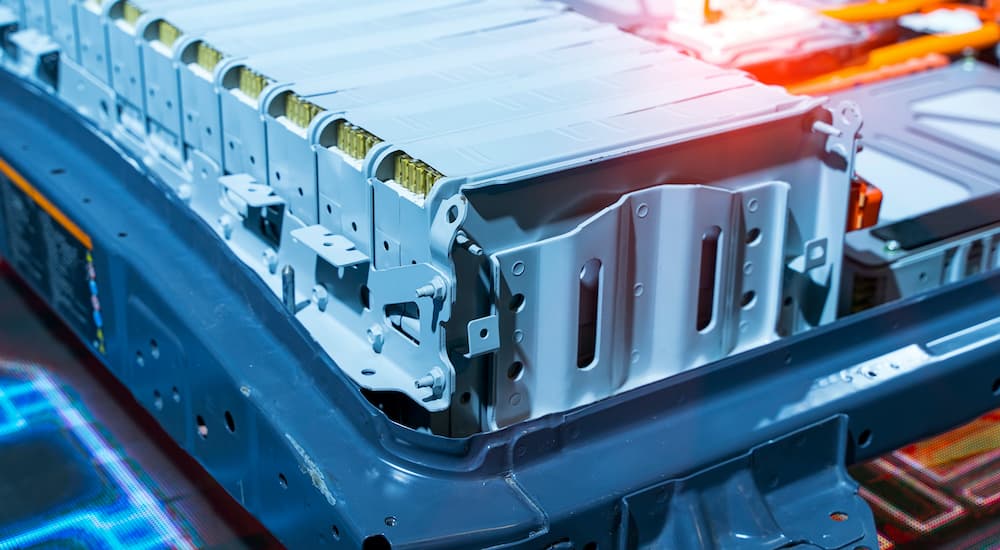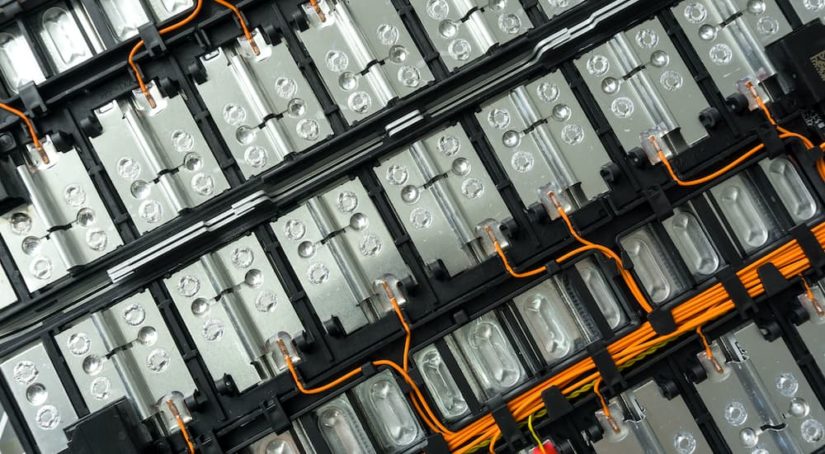When you’re shopping for a car, there are a lot of different things that you have to keep track of. From general stuff like different makes and models to much more specific details like certain performance, safety, or luxury features you need. With all of that in mind, the last thing you might have time for is looking into major developments in the auto industry like GM’s Ultium battery or what that means for their brands like Chevy and GMC.
Fortunately for you, I’m here to spend my time looking into just this sort of thing and seeing if it’s something that will really affect you. In this case, I can pretty confidently say that the Ultium battery is something that you should know about as a prospective car-buyer. It might not have a huge impact on you right this moment (though it may if you’re looking at some very specific vehicles), but it will matter when you’re shopping for a car in the years to come. So I’m going to take you through what the Ultium battery and platform are all about and what you need to know as a car buyer.
What is the Ultium Battery?
Before we get into what you should be aware of as someone shopping for a car, let’s dig into a little back-story here. Without going too deep into the history of GM and Electric Vehicles (EVs), you should know a few details. For starters, prior to now, there have been a couple of different EV platforms that General Motors has worked on over the last few decades. Previously, they were known as their Battery Electric Vehicle (BEV) 1 and 2 platforms, which ran from the late 1990s and are still in use today.
Rather than go with BEV3 for their most recent platform, however, GM changed the name to “Ultium” after the battery they’ve developed for their future EV models. It’s really more than just a battery, however, as it dictates a lot of how their EVs will be designed going forward. There are a lot of really impressive aspects of this battery, like the fact that it uses far less cobalt than previous batteries, which will make the development and manufacturing of them easier and cheaper for years to come.
Perhaps the most important thing to really keep in mind, however, is the way that the Ultium battery is designed. Where Tesla makes their batteries as cylinders, similar in shape to AA batteries, the Ultium batteries are rectangular. I know that doesn’t sound like much – but the cylindrical shape means that Tesla’s batteries have to be configured in certain ways when they’re designing their vehicles and take up far more room. The rectangular shape of the Ultium batteries lets GM configure them vertically or horizontally in a vehicle.

What Does the Ultium Platform Mean for GM?
Essentially, the new Ultium battery and platform create a single, unified technology that will be used across GM’s EV models going forward. Prior to its development, Chevy and other brands developed different solutions to try to find what would work best. With the Ultium battery, however, we’ll see Chevy, GMC, Cadillac, and Buick all use the same platform that can be adjusted and customized for individual vehicles.
That’s why the rectangular design is so important. It means that the batteries, which weigh a lot altogether, can be oriented in a way that distributes that weight most effectively for the type of vehicle being designed. So whether GM’s engineers are designing a truck, sports car, or hatchback, they can adjust how the batteries are set up in order to make the vehicle as efficient as possible. Better yet, it means making new EV models should be quicker and simpler than the development of traditional vehicles.
Consider this: right now, there are more than 500 different combinations of drivetrain options across the various vehicles from GM’s many brands. By comparison, GM is looking at just 19 different setups for batteries and motors for the various EV models they’re working on. So things become a lot simpler, which means that we’ll see more vehicles, shorter development times, and hopefully lower prices for the consumer in the years to come.
How Will the Ultium Affect You as a Car-Buyer?
This is probably what you’re really interested in – though I’m glad you made it this far because the more you know about the vehicles you can buy, the better. Ultimately, for the first year or so, the Ultium battery and platform are going to be pretty limited in use, so unless you’re interested in some very specific vehicles, then it won’t affect you too much. For example, the Chevy Bolt EV and Bolt EUV still use the older BEV2 platform, so this doesn’t matter if that’s what you’re interested in.
On the other hand, if you’re interested in a new GMC Hummer EV model, then Ultium is something you should definitely know about. The all-new Hummer is the first vehicle being released that uses this new platform and Ultium battery. Similarly, the upcoming Cadillac Lyriq EV model will also be built on the Ultium platform.
The Lyriq is actually a really great example of how this will affect you because it’s coming out about nine months sooner than GM originally planned. That’s because the nature of the Ultium platform and computer design made the process of creating the Lyriq far faster than it would’ve been just a few years ago. So with this platform, we’re going to see more models – like the upcoming Chevy Silverado EV – designed and released quicker than you might expect.

What You Should Keep in Mind in the Future
Best of all, this kind of universal platform for their models, and the specific way that the Ultium battery has been developed, means you’ll not only get more EV options in the future, but they should become more affordable too. Obviously, the GMC Hummer and Cadillac Lyriq are not going to be the most budget-friendly options around, but these are the first vehicles to use this new platform. Being an early adopter of any technology is always expensive, so don’t get too put off by what the price tag looks like right now.
If you’ve got the budget for the new and flashy, then that’s great, and these models are some of the best EVs coming to market in the next year or so. But if you’re ready to wait a bit longer, then your patience will be rewarded with lower prices, better range and battery life, and other improvements that inevitably come with continued development on this sort of technology. In fact, since these vehicles will share a platform, the designers and engineers at GM’s various brands can all learn from each other and improve.
The development of the GMC Hummer and Cadillac Lyriq is informing development for the Silverado EV and other future EV models from all of GM’s brands. Ultimately, this will pay off for all of us as we get to enjoy the benefits of this work in the years ahead. We’ll also see GM’s competitors working on similar projects as they see how the Ultium battery is making development easier. In fact, you can already find this: Stellantis is working on a similar, universal EV platform for their vehicles across brands like Jeep, Ram, and Chrysler rather than having each develop its own thing. So no matter what company you’re a fan of, this new platform is going to be advantageous for you.



